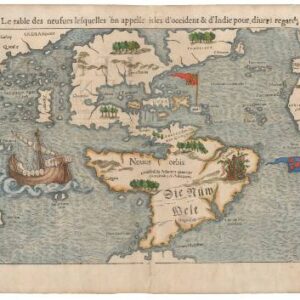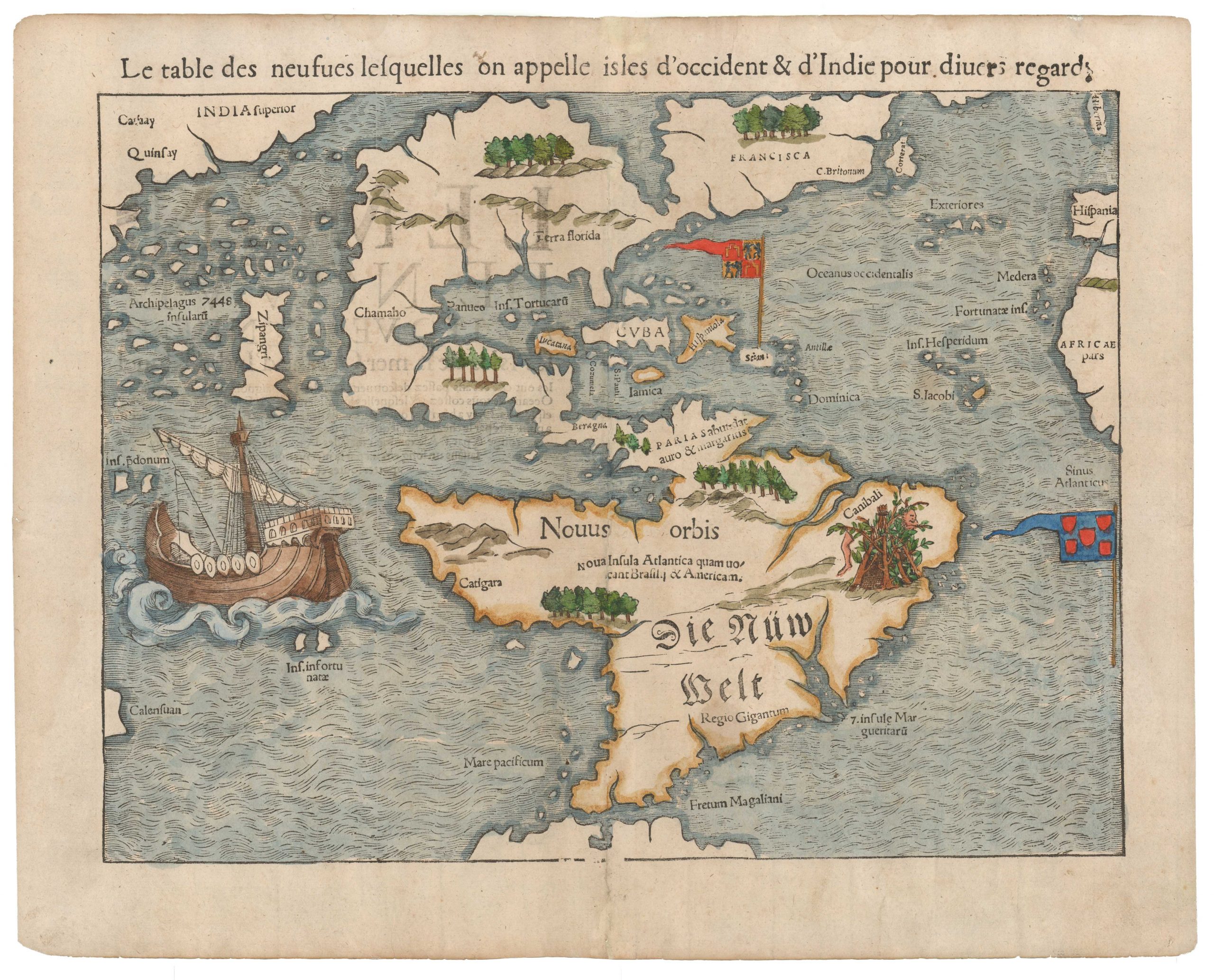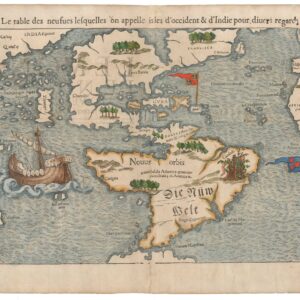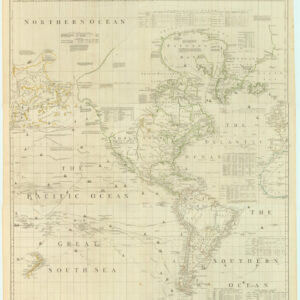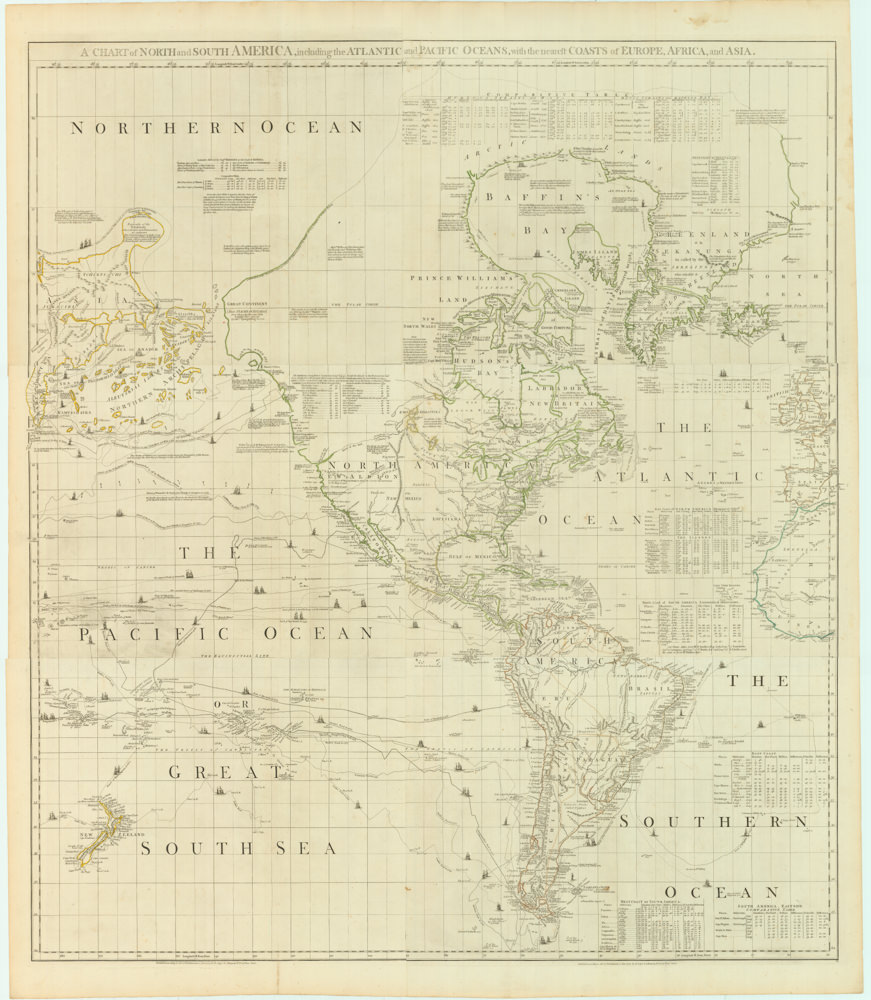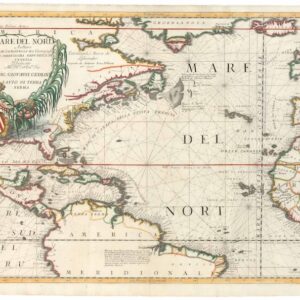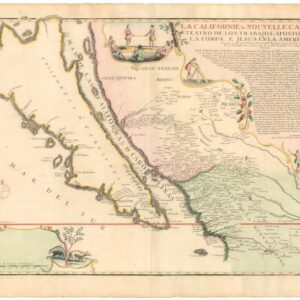Sebastian Münster’s Map of the Americas: The first printed map of the new continents in their entirety.
Die Neuwen Inseln. So Hinder Hispanien Gegeu Orient Bey Dem Land India Ligen.
Out of stock
Description
1. The earliest map to show North and South America in full continental form, Münster’s Novae Insulae is one of the most important and iconic maps of early America.
2. It is a map that gives us a window onto the Renaissance mind; the very title — “New Islands” — expresses how Europeans conceived of the New World in the 16th century.
3. Place names on the map provide us with a range of important insights into the way that Münster understood American geography at this stage.
4. With a prominent NW Passage and Sea of Verrazzano, a reliance on the accounts of Marco Polo, and demarcation of the Treaty of Tordesillas, many of the great cartographic themes of the era are all present on this one map.
Münster’s Americas is a map of firsts: it is the first printed map in history to depict the American continents in their full form; it is the first application of the term Mare Pacificum as a concrete designation; and it is one of the first European depictions of Japan and its associated archipelago (the first state was published three years before European ships first reached Japan). For decades after its initial publication, it was without doubt the most famous and most widely circulated map of the New World on the market. It was only gradually replaced from its thirty year dominance when Abraham Ortelius published his seminal map of America in 1570. These elements make it one of the most desirable and collectible maps on the market, a linchpin in any collection with a focus on America.
Cartographer(s):
Sebastian Münster (1488-1552) was a cosmographer and professor of Hebrew who taught at Tübingen, Heidelberg, and Basel. He settled in Basel in 1529 and died there, of the plague, in 1552. Münster was a networking specialist and stood at the center of a large network of scholars from whom he obtained geographic descriptions, maps, and directions.
As a young man, Münster joined the Franciscan order, in which he became a priest. He studied geography at Tübingen, graduating in 1518. Shortly thereafter, he moved to Basel for the first time, where he published a Hebrew grammar, one of the first books in Hebrew published in Germany. In 1521, Münster moved to Heidelberg, where he continued to publish Hebrew texts and the first German books in Aramaic. After converting to Protestantism in 1529, he took over the chair of Hebrew at Basel, where he published his main Hebrew work, a two-volume Old Testament with a Latin translation.
Münster published his first known map, a map of Germany, in 1525. Three years later, he released a treatise on sundials. But it would not be until 1540 that he published his first cartographic tour de force: the Geographia universalis vetus et nova, an updated edition of Ptolemy’s Geography. In addition to the Ptolemaic maps, Münster added 21 modern maps. Among Münster’s innovations was the inclusion of map for each continent, a concept that would influence Abraham Ortelius and other early atlas makers in the decades to come. The Geographia was reprinted in 1542, 1545, and 1552.
Münster’s masterpiece was nevertheless his Cosmographia universalis. First published in 1544, the book was reissued in at least 35 editions by 1628. It was the first German-language description of the world and contained 471 woodcuts and 26 maps over six volumes. The Cosmographia was widely used in the sixteenth and seventeenth centuries and many of its maps were adopted and modified over time, making Münster an influential cornerstone of geographical thought for generations.
Condition Description
Various repairs and reinforcements. Please see image. Not a perfect copy, thus the discounted price. A great opportunity to own one of the history of cartography's most famous maps.
Nice coloring - would look great framed and on a wall.
Wide margins; letterpress header in German on verso; early ink inscription in German to verso.
References
